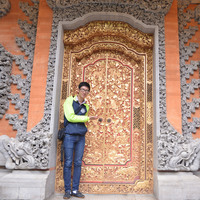Website:
https://sites.google.com/site/ippasecretariat/headline2/panel-sessions/panel-s35 From our hominin ancestors in the Palaeolithic world until the end of the ancient era there seem to have been closer contacts between Europe, Eurasia and Southeast/East Asia which might have been forgotten due to sheer time or diverse historical events like the formation of states. The archaeological evidence invites us to take a closer look at the similarities and to investigate the different cultural contexts. From sharing same ideas and concepts to influences by trade this panel tries to highlight the cultural markers to provide a more integrated view. Contact and communication between forager communities in the Pleistocene world and the beginning of the Holocene seem to be broader than in later times. This seems to be supported by the archaeological record, for example within the toolkits – which might just be due to the resources or the spread of pottery, which is similar in form and decoration. But some innovations take a different route than the transition to agriculture or ideas of antiquity. This paper will look at the connections in prehistoric times and tries to describe the ways of interaction often overlooked by historiography. 02) Champa archaeology in Binh Dinh province and its relationship with the exchange network of Vijaya (11–15 centuries) Nguyen Huu Manh (Kanazawa University, Japan) Vijaya land (current Bình Định province in central Vietnam) can be described as a polity in Champa history. Champa temples-towers, citadels, ceramic kilns and inscriptions still remain there. Based on previous studies and my reconnaissance works carried out in 2015 and 2016, in total 45 Champa sites have been recognized in Bình Định province. I make a site distribution map of Bình Định, in order to analyze spatial distribution of Champa relics in Bình Định province, and to reconstruct the structure of Vijaya riverine polity. Located between the mountains and the sea, the region lay on rather narrow areas of riverine and coastal plains with difficult access in ancient times except by river or sea due to the rugged terrain. Analyzing the spatial distribution of Champa relics and artifacts in Bình Định, I consider the rivers keep the key role in the history of Vijaya in Champa, as the main traffic artery connecting the regions together, between Vijaya and the highlands, reaching out to the sea creating the trade routes of Vijaya towards other regions in Champa and the world, providing the foundation for the prosperity of Vijaya. 03) The tools of non-human primates: Their relevance in African and Asian contexts The development of tool use among non-human primates has reached a milestone which has increased our understanding of the evolution of human technology. In this presentation, I broadly discuss and compare the various tools and tool technologies among Asian and African apes and monkeys. It has been seen that tools such as the 'spear' are occasionally used by both chimpanzees and orangutans. On the other hand, other Asian and African apes (i.e., gibbon and bonobos respectively) were not observed to display a similar type of " spear " related activities. Apart from this, there are various behaviours such as sponging, " glove " use, hammer use, anvil use and others which
